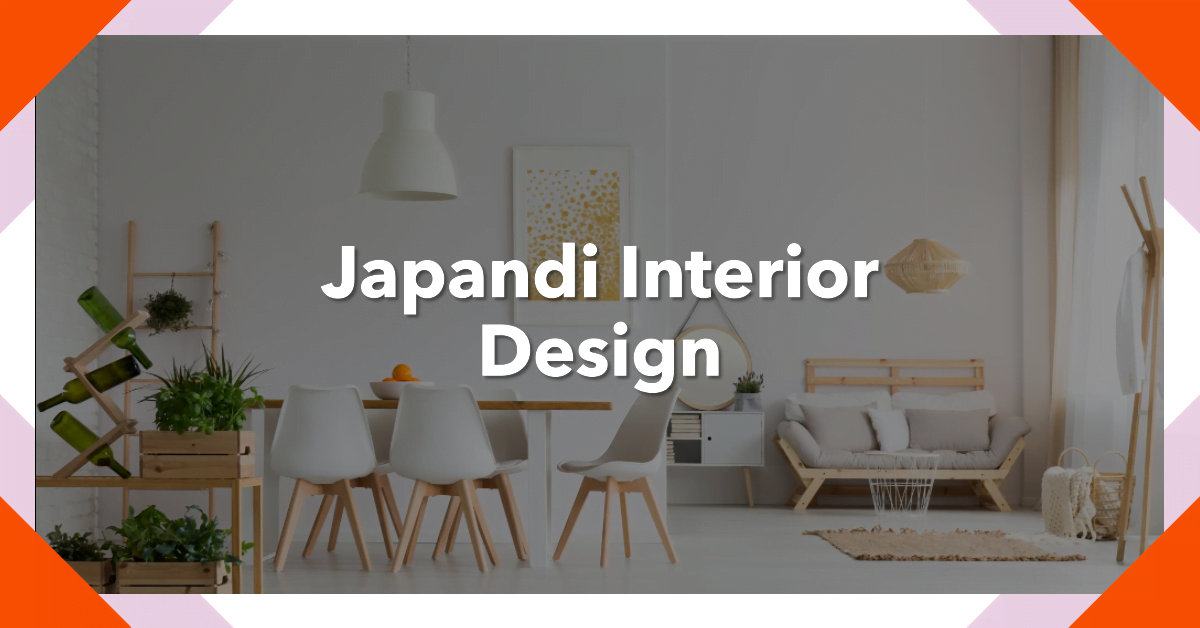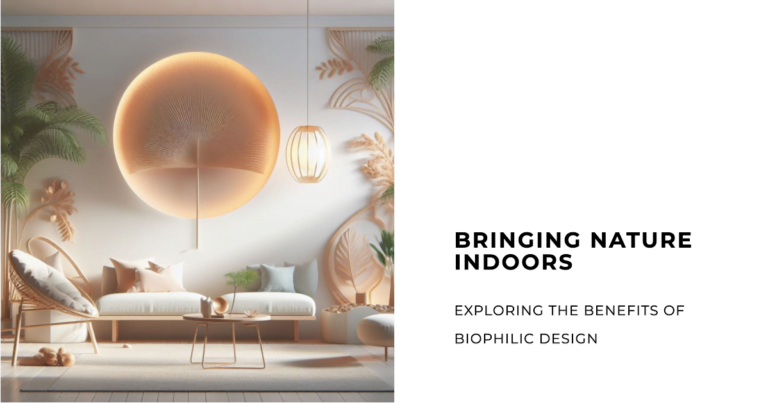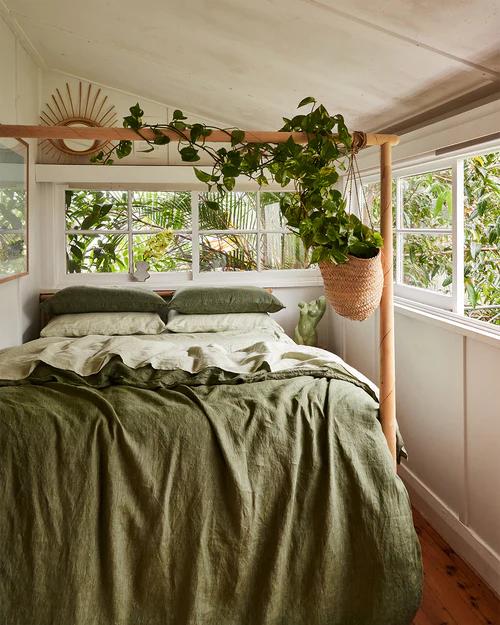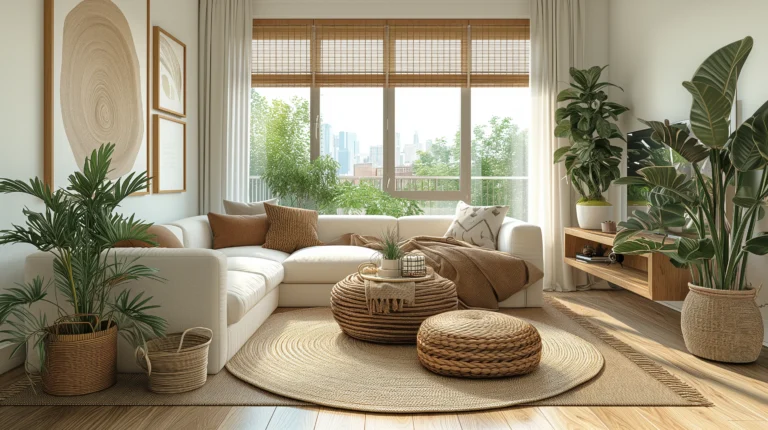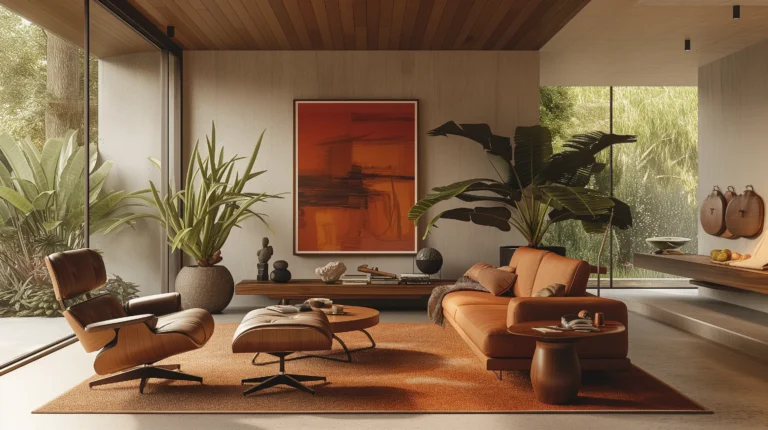In the world of interior design, trends come and go, but some styles have the power to captivate us with their unique charm and timeless appeal. One such style that has been gaining traction in recent years is Japandi style. A harmonious blend of Japanese and Scandinavian design principles, Japandi interior design style is more than just a fleeting trend—it’s a design philosophy that celebrates simplicity, functionality, and a deep connection with nature.
Japandi style is a fusion of the minimalist elegance of Japanese design and the functionality and warmth of Scandinavian design. It’s about finding the perfect balance—where the sleek, modern lines of Scandinavian design meet the rustic, organic elements of traditional Japanese interiors. This unique blend creates spaces that are not only aesthetically pleasing but also foster a sense of tranquility and mindfulness.
What is Japandi Style?
Japandi is a portmanteau of ‘Japanese’ and ‘Scandinavian’, and as the name suggests, it’s a fusion of design elements from these two cultures. The style emerged as designers and homeowners started to appreciate the similarities between the Japanese philosophy of ‘wabi-sabi’ (finding beauty in imperfection) and the Scandinavian principle of ‘hygge’ (creating a warm and cozy atmosphere). Both cultures value simplicity, functionality, and a connection with nature, making them a perfect match.
Minimalism is a key aspect of Japandi style. The design philosophy encourages eliminating clutter and focusing on the essentials. Every piece of furniture, every decor item has a purpose. There’s no room for unnecessary items or decorations. This minimalist approach creates a sense of tranquility and order, turning homes into peaceful retreats from the outside world.
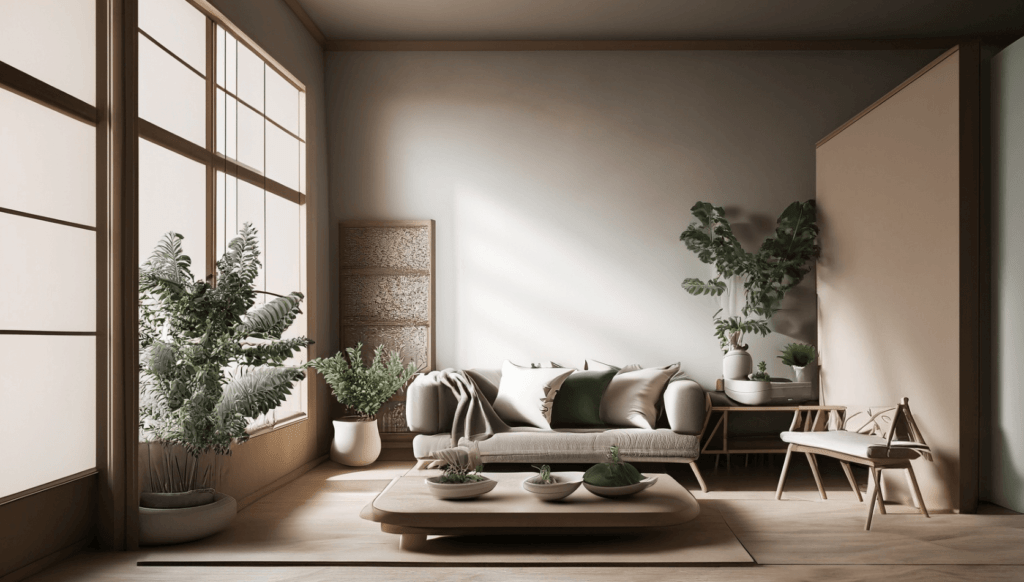
Functionality is another important principle in Japandi style. The design is not just about aesthetics; it’s also about creating spaces that are practical and easy to live in. Furniture is often multi-purpose, and layouts are designed to facilitate easy movement and use.
Nature plays a significant role in Japandi style. Both Japanese and Scandinavian designs have a deep respect for the natural world, and this is reflected in the use of natural materials like wood, bamboo, and stone. Indoor plants are also a common feature, further strengthening the connection with nature.
The Japanese Influence in Japandi Interior Design
Neutral colors are a hallmark of Japandi style. The palette is typically composed of soft, muted tones like off-white, beige, and light gray, with occasional pops of color—often inspired by nature—like forest green or ocean blue. These colors create a serene and calming environment, perfect for relaxation and mindfulness.
High-quality, natural materials are preferred in Japandi style. There’s a focus on craftsmanship and longevity, with a preference for pieces that are durable and age gracefully. This emphasis on quality over quantity aligns with the style’s eco-friendly ethos and respect for natural resources.
While Japandi style is a blend of Japanese and Scandinavian design principles, the Japanese influence plays a significant role in shaping its unique aesthetic.
Japanese design is the philosophy of ‘wabi-sabi’, which celebrates the beauty in imperfection and transience. This principle is reflected in Japandi style through the use of natural, imperfect materials, and a color palette that embraces the subdued and the understated. The result is a design that feels authentic, grounded, and connected to the natural world.
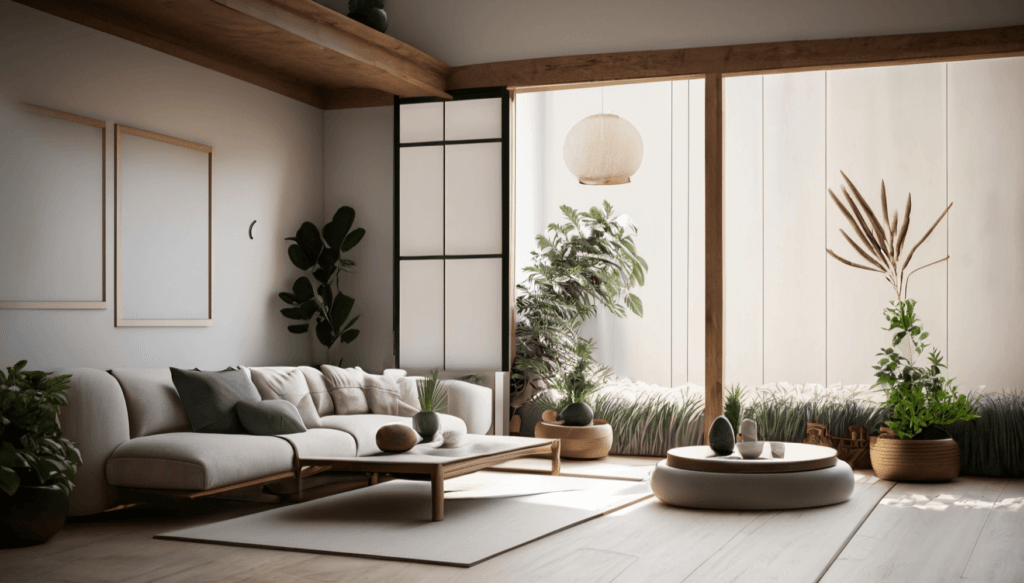
Another key Japanese design principle is ‘Ma’, which refers to the concept of negative space or emptiness. In Japandi style, this translates into uncluttered spaces, minimalist layouts, and a focus on functionality. Every piece of furniture or decor is thoughtfully chosen and placed, creating a sense of balance and harmony.
Japanese aesthetics also place a high value on craftsmanship and quality. This is evident in Japandi style through the preference for high-quality, durable materials and finely crafted furniture. The emphasis is on pieces that are not only beautiful but also built to last, reflecting a respect for resources and a rejection of the disposable culture.
The influence of Japanese design in Japandi style extends to the use of natural elements. Indoor plants, water features, and the use of natural light are common, creating a sense of tranquility and a strong connection with nature. This is in line with the Japanese concept of ‘Shinrin-yoku’ or ‘forest bathing’, which is all about immersing oneself in nature to improve well-being.
Japandi Style Room by Room
Incorporating Japandi style into your home means creating a harmonious balance room by room. Whether it’s the living room, bedroom, or kitchen, each space can be transformed with the principles of Japandi style. Here are some practical tips and examples for each room, with a focus on Japanese elements.
Living Room
The living room is the heart of the home, and in Japandi style, it’s all about creating a serene and inviting space. Start with a neutral color palette, using shades like soft gray, warm beige, and off-white. For furniture, opt for pieces that combine functionality and aesthetics—think low-line sofas, wooden coffee tables, and minimalist shelving units. Add a touch of nature with indoor plants, bamboo accents, or a water feature. Remember, less is more in Japandi style, so avoid clutter and keep decorations to a minimum.
Bedroom
In the bedroom, Japandi style promotes tranquility and relaxation. Stick to a minimalist layout with a low platform bed, a simple bedside table, and ample storage to keep clutter at bay. Use natural materials like linen for bedding and wood for furniture. Incorporate Japanese elements like shoji screens as room dividers or window coverings, and consider adding a Zen garden element, like a small indoor rock garden or a bonsai tree.
Kitchen
The kitchen in Japandi style is a blend of functionality and beauty. Opt for sleek, modern cabinetry in light wood tones, paired with stainless steel appliances for a touch of Scandinavian minimalism. Add Japanese influences with bamboo utensil holders, ceramic dishware, and a wooden serving tray. Keep countertops clear and organized, and consider open shelving to display beautiful dishware or a collection of sake cups.
In each room, remember to incorporate elements of nature, whether it’s through the use of natural materials, indoor plants, or natural light. The goal is to create a space that feels balanced, serene, and connected to the natural world, reflecting the core principles of Japandi style.
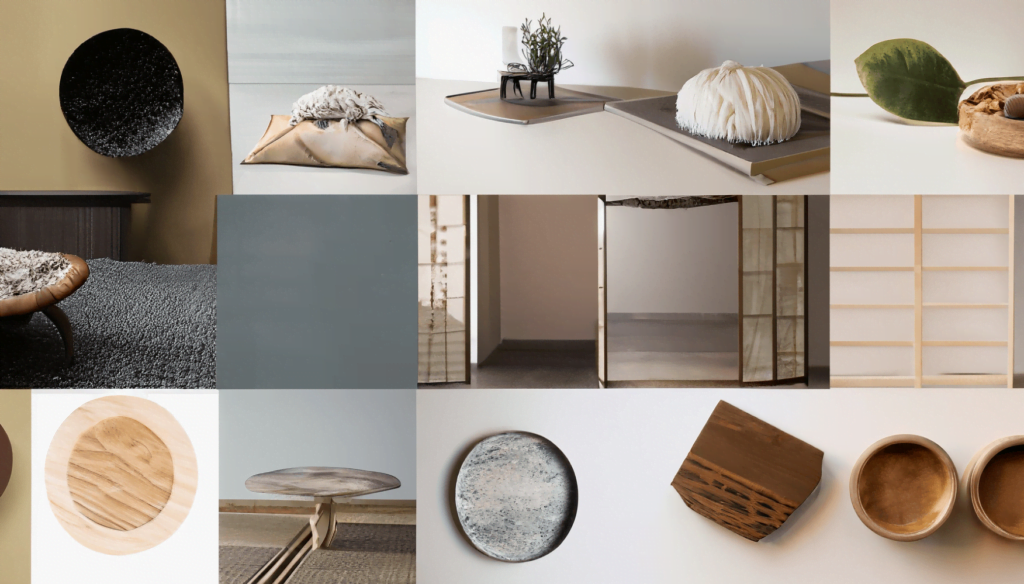
Japandi vs. Wabi-Sabi
While both Japandi and Wabi-Sabi styles originate from Japan and share a love for simplicity and nature, they differ in their approach. Wabi-Sabi embraces the imperfect and transient, finding beauty in the flawed and the weathered. It’s about appreciating the natural cycle of growth, decay, and death. On the other hand, Japandi style, while also valuing simplicity and nature, leans more towards a minimalist and functional design, combining these elements with the clean lines and modern aesthetics of Scandinavian design.
Japandi vs. Bohemian
Bohemian style is all about free-spirited expression, vibrant colors, eclectic decor, and a mix of various cultural influences. It’s a style that breaks rules and embraces the unconventional. Japandi style, in contrast, is about balance, harmony, and restraint. It favors a muted color palette, minimalist design, and a strong connection with nature. While Bohemian style is loud and expressive, Japandi style is quiet and contemplative.
What Sets Japandi Style Apart
What makes Japandi style unique is its successful fusion of two seemingly different design philosophies. It brings together the minimalist elegance of Japanese design and the cozy functionality of Scandinavian design, creating a style that is both aesthetically pleasing and practical.
It’s a style that promotes a slower, more mindful way of living, encouraging us to appreciate the beauty in simplicity and find joy in the everyday. In a world that’s often chaotic and fast-paced, the serene, balanced interiors of Japandi style offer a much-needed respite.
The Eco-Friendly Aspect of Japandi Style
Today where sustainability is increasingly important, the eco-friendly aspect of Japandi style holds significant appeal. This design philosophy not only creates aesthetically pleasing spaces but also respects and celebrates the natural world.
A key characteristic of Japandi style is the use of sustainable, organic materials. From furniture to decor, natural materials like wood, bamboo, stone, and linen are preferred. These materials are not only beautiful and durable but also have a lower environmental impact compared to synthetic alternatives. For instance, bamboo, a common material in Japandi interiors, is a highly sustainable resource due to its fast growth rate and low requirement for water and pesticides.
In Japandi style, there’s also a strong emphasis on quality over quantity. Instead of buying cheap, disposable items, the focus is on investing in fewer, high-quality pieces that are built to last. This approach reduces waste and promotes a more sustainable way of living.
Furthermore, Japandi style encourages a minimalist lifestyle, which inherently is more eco-friendly. By reducing clutter and only keeping items that are truly necessary or bring joy, we can reduce consumption and waste.
The eco-friendly aspect of Japandi style is one of the reasons why it appeals to eco-conscious individuals. It aligns with the values of sustainability and mindful consumption, making it not just a design choice, but a lifestyle choice that respects and cherishes the environment.
How to Get Started with Japandi Style
Embracing Japandi style in your home doesn’t have to be a daunting task. With a few practical tips and budget-friendly ideas, you can start your journey towards creating a serene, balanced space that reflects the principles of Japandi style.
1. Start with a Neutral Palette:
Japandi style favors a muted, neutral color palette. Start by choosing soft, earthy tones for your walls, like off-white, beige, or light gray. These colors create a calm, serene backdrop for your Japandi-inspired space.
2. Choose Furniture Wisely:
When it comes to furniture, opt for pieces that combine functionality and aesthetics. Look for clean lines, natural materials, and a minimalist design. Remember, in Japandi style, less is more, so avoid clutter and keep your space as open and airy as possible.
3. Incorporate Natural Elements:
Bring nature indoors with plants, flowers, or even a small indoor water feature. Use natural materials like wood, bamboo, or stone for your furniture and decor. These elements will help create a sense of tranquility and connection with nature, which is central to Japandi style.
4. Focus on Quality Over Quantity:
Instead of filling your space with lots of items, focus on choosing a few high-quality pieces that you truly love. This approach not only creates a more minimalist, clutter-free space but also promotes sustainability.
5. Create a Balance:
One of the key principles of Japandi style is balance. Try to create a balance between the different elements in your space, whether it’s between colors, textures, or furniture pieces. This will help create a sense of harmony and tranquility in your space.
Budget-Friendly Japandi Style Ideas:
Embracing Japandi style doesn’t have to break the bank. Here are a few budget-friendly ideas:
- Repurpose Existing Furniture: Instead of buying new furniture, consider repurposing your existing pieces. A simple coat of paint or a new set of handles can transform an old piece of furniture into a Japandi-style piece.
- DIY Decor: Create your own decor items using natural materials. For example, you could make a wall hanging from driftwood or a centerpiece from stones and dried flowers.
- Shop Second-Hand: Check out thrift stores or online marketplaces for second-hand furniture or decor items. You can often find high-quality pieces at a fraction of the cost of new items.
- Use Plants: Plants are a cost-effective way to bring nature indoors and add a touch of Japandi style to your space. Choose low-maintenance plants like succulents or snake plants for a fuss-free option.
By incorporating these tips and ideas, you can start creating a Japandi-style space that is not only beautiful and serene but also reflects your commitment to sustainability and mindful living.

